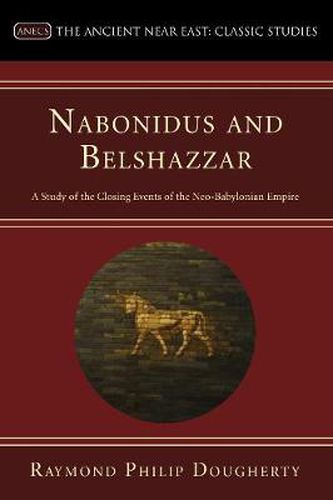Readings Newsletter
Become a Readings Member to make your shopping experience even easier.
Sign in or sign up for free!
You’re not far away from qualifying for FREE standard shipping within Australia
You’ve qualified for FREE standard shipping within Australia
The cart is loading…






The remains of ancient societies often require decades to unearth, but much longer to interpret and understand. The methods of archaeology have progressed dramatically in recent years. Archaeologists have continuously refined their tools, methods, and techniques. Today archaeology is characterized by pottery identification, classification, and cataloging; disciplined excavation of squares; use of sophisticated electronics, such as GPS, infrared, and computer-aided design; and the integration of multiple methodologies, such as epigraphy, art history, physical anthropology, paleobotany, and climatology.
The interpretation of ancient Near Eastern history and cultures has also progressed. An increasing number of documents has been unearthed. The vast document collections from Tel el-Amarna, Nippur, Mari, Nuzi, Ebla, Ugarit, and the Dead Sea caves are just some of the more spectacular examples. These provide an enormous amount of detail about royal administrations, business transactions, land tenure systems, taxes, political propaganda, mythologies, marriage practices, and much more. And things that sometimes seem unique about one culture at first look often fit into larger patterns of relationship when the surrounding cultures are better understood.
The Ancient Near East: Classic Studies (ANECS) reprints classic works that have brought the results of archaeology, textual, and historical investigations to audiences of scholars, students, and the general public. While the discussions continue and the results of earlier investigations are continuously re-examined, these classic works remain of interest and importance. K. C. HANSON Series Editor
$9.00 standard shipping within Australia
FREE standard shipping within Australia for orders over $100.00
Express & International shipping calculated at checkout
The remains of ancient societies often require decades to unearth, but much longer to interpret and understand. The methods of archaeology have progressed dramatically in recent years. Archaeologists have continuously refined their tools, methods, and techniques. Today archaeology is characterized by pottery identification, classification, and cataloging; disciplined excavation of squares; use of sophisticated electronics, such as GPS, infrared, and computer-aided design; and the integration of multiple methodologies, such as epigraphy, art history, physical anthropology, paleobotany, and climatology.
The interpretation of ancient Near Eastern history and cultures has also progressed. An increasing number of documents has been unearthed. The vast document collections from Tel el-Amarna, Nippur, Mari, Nuzi, Ebla, Ugarit, and the Dead Sea caves are just some of the more spectacular examples. These provide an enormous amount of detail about royal administrations, business transactions, land tenure systems, taxes, political propaganda, mythologies, marriage practices, and much more. And things that sometimes seem unique about one culture at first look often fit into larger patterns of relationship when the surrounding cultures are better understood.
The Ancient Near East: Classic Studies (ANECS) reprints classic works that have brought the results of archaeology, textual, and historical investigations to audiences of scholars, students, and the general public. While the discussions continue and the results of earlier investigations are continuously re-examined, these classic works remain of interest and importance. K. C. HANSON Series Editor